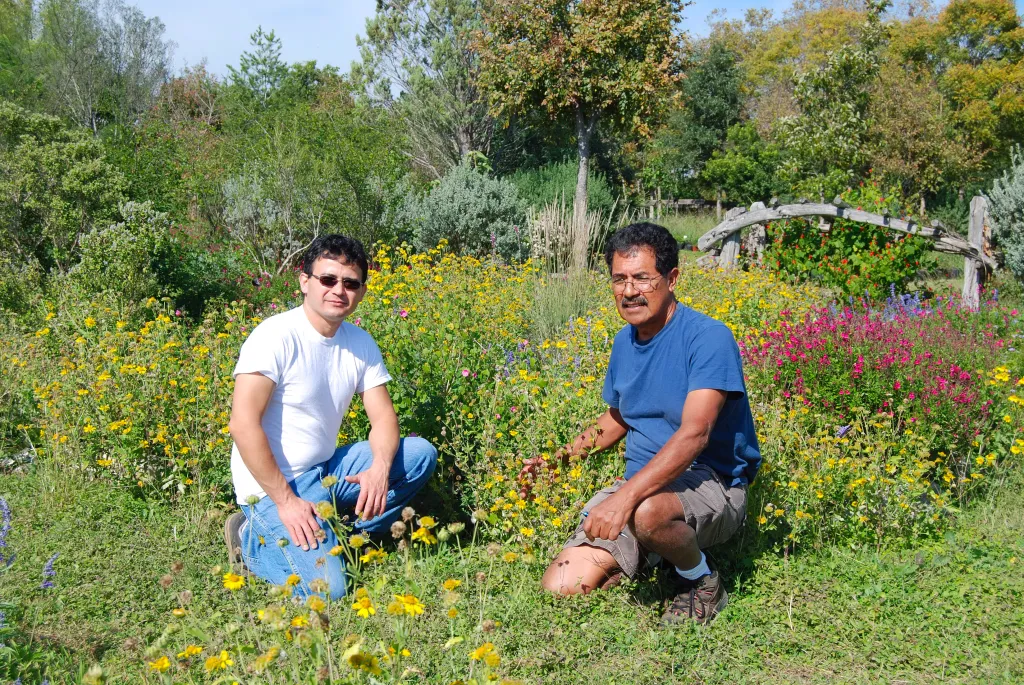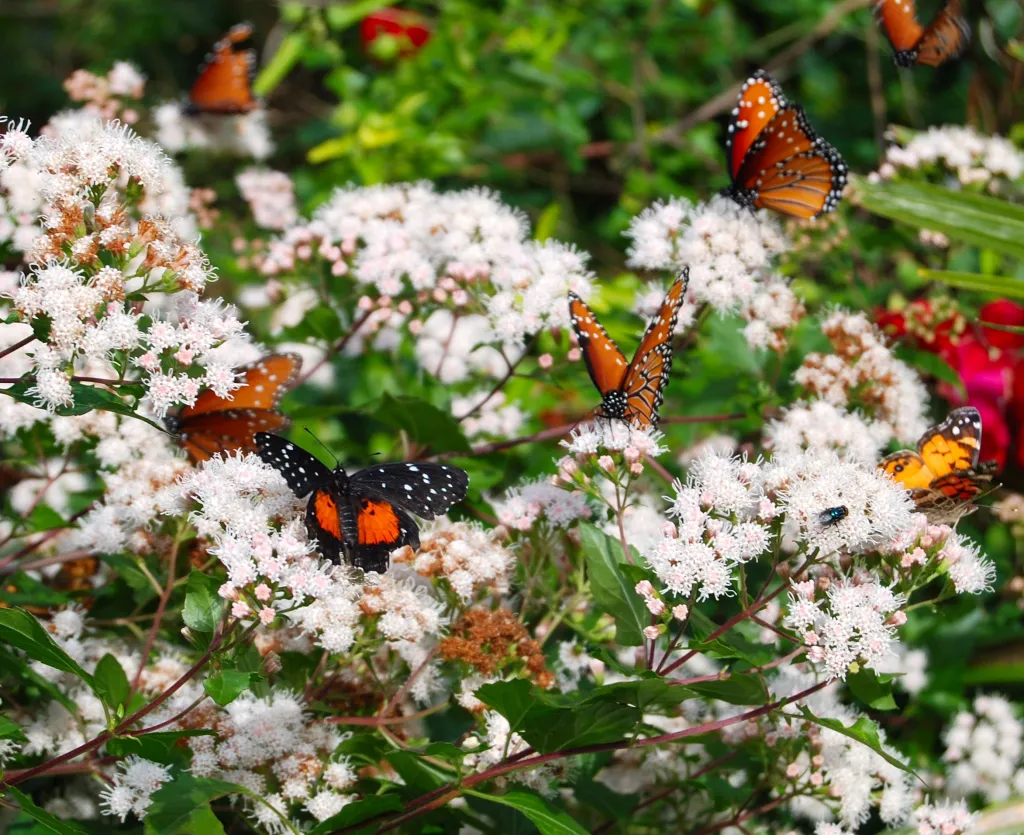The newest participant in the Boerne Chapter’s Operation NICE! (Natives Instead of Common Exotics!) is Medina Garden Nursery. It’s on Highway 16, just at the southeastern entrance to the little town of Medina and right across the road from Baxter Adams’ tree nursery, the supplier for of our annual Bigtooth Maples for Boerne giveaway.
“Medina Garden Nursery” is the perfect name for this business, because it is both a nursery and a native-plant garden. The hundreds of potted plants for sale are lined up on the ground among the native trees, shrubs, and flowers planted in the big “front yard” of Ernesto Cariño’s rock house. Ernesto and his long-time friend Ysmael Espinosa own and operate this garden-nursery.

Ernesto and Ysmael met when they both worked at HEB in Kerrville during the late 1990s. Ysmael, who was born and raised in Kerrville, still works at that HEB and does double duty on his times off as a nurseryman and landscaper. Currently he and his family live in Medina.
Ernesto came to the US from the Mexican state of Puebla during the 1960s. Eventually he moved to Medina and built the rock house. Ernesto is an accomplished oil painter, but for the present, there is no time for art in his busy nursery and landscaping career.
After work hours during the days they both were with HEB, Ysmael and Ernesto used to help out at Betty Winningham’s nursery. This was at the time Betty was starting her Natives of Texas Nursery on Highway 16 between Kerrville and Medina. From Betty, they learned a lot about propagating and marketing native plants.
Before long, Ernesto and Ysmael thought they might start a nursery and landscape business of their own on Ernesto’s land in Medina. Working with Betty Winningham, they had learned to appreciate the value of water-conserving native plants for local landscaping. Besides that, Ernesto’s previous experience with his property reinforced the idea that their business should emphasize the use of native plants.
In early years, Ernesto had landscaped his yard with whatever plants were popular at the nurseries. Then every time he left for extended visits to family in Mexico, those plants dried up and died. Ernesto soon realized he needed plants more adapted to the hot Hill Country summers.
When they decided to start their nursery specializing in native plants, a lot of practical advice and encouragement came from their Tarpley neighbor Dorothy Matissa, one of the pioneers in promoting native plants for Hill Country gardens. In addition, Chuck Janzow of Boerne taught them many tricks of the trade about propagating natives.
Several other people prominent in the native-plant movement also became aware of this Medina nursery. Sally and Andy Wasowski, on their way to visit cousins in Utopia, began to stop by from time to time to encourage Ernesto and Ysmael in their efforts to grow and sell native plants. Jill Nokes also got wind of the Medina Garden Nursery and came to lend advice and encouragement. Sue Tracy, who lives in the Medina area, became one of their staunch supporters. This nursery soon earned a good name for itself far and wide.

Ysmael and Ernesto have experimented with growing and propagating many different water-conserving plants found in the Hill Country, West Texas, and northern Mexico. It is always fun to see what plants they’ll try next. That nursery offers a few species probably seldom available anywhere else.
Medina Garden Nursery is located on an alluvial terrace of the Medina River and so has better soil than is in most Hill Country yards. Realizing that they need to promote landscape plants that will tolerate the thin, dry soils more typical of the limestone hills in this part of Texas, Ernesto and Ysmael created a “caliche” garden.
They dug out many cubic yards of good soil from a large plot and replaced it with calcareous rocky material almost like road base. Then they planted an array of native shrubs and wildflowers that thrive in this seemingly hostile terrain. It’s a beautiful plot that has educated a lot of customers.
The many native plants that have been growing in the ground for years at this nursery provide a unique service for customers. They illustrate the size and appearance of the mature species in a landscape setting. Also, there are examples of shrubs and wildflowers that attract swarms of nectaring butterflies during the bloom periods. Other plants in the garden are the special host plants for the larvae of those very butterflies.
Ernesto and Ysmael have not only established a native-plant nursery, they also have created a teaching garden.


